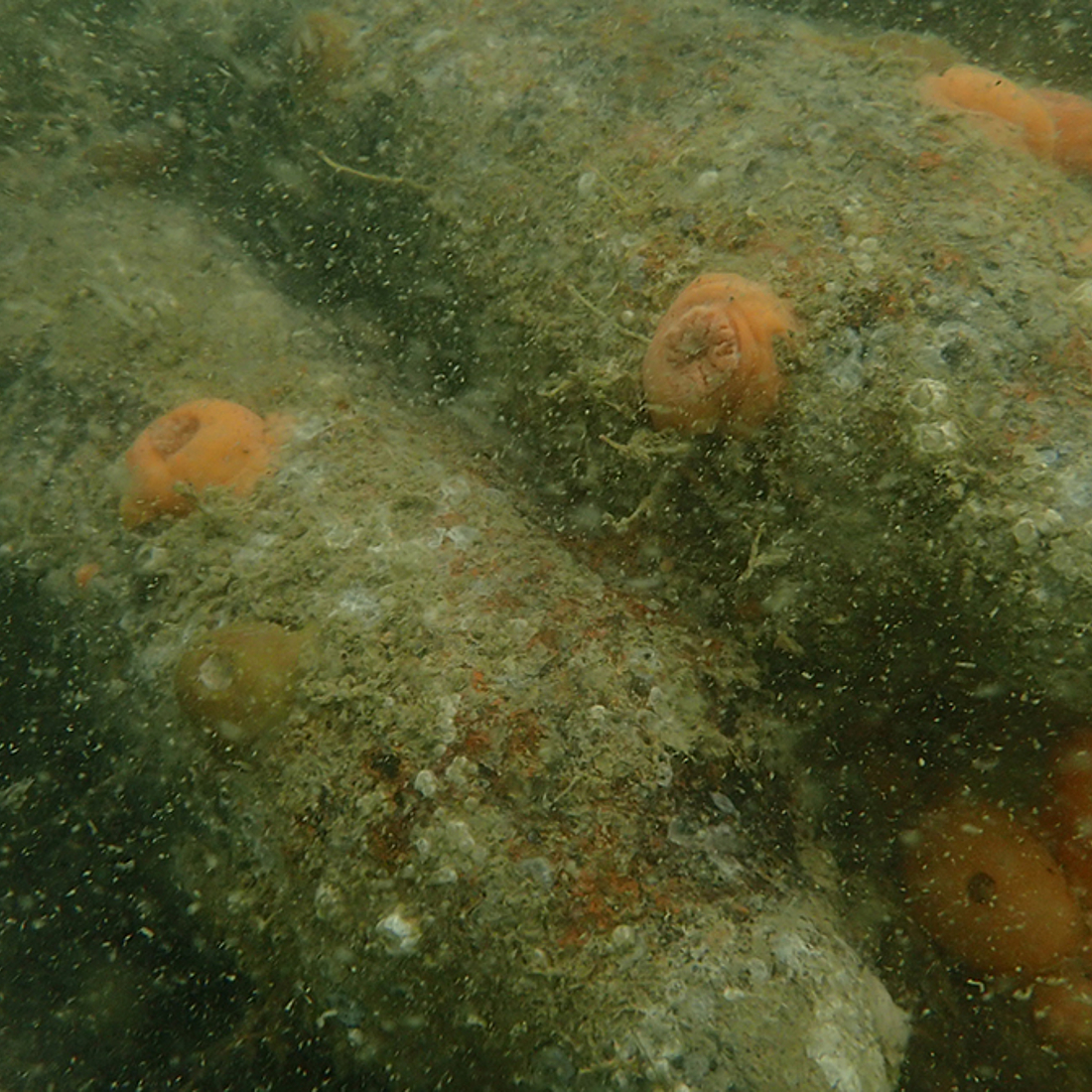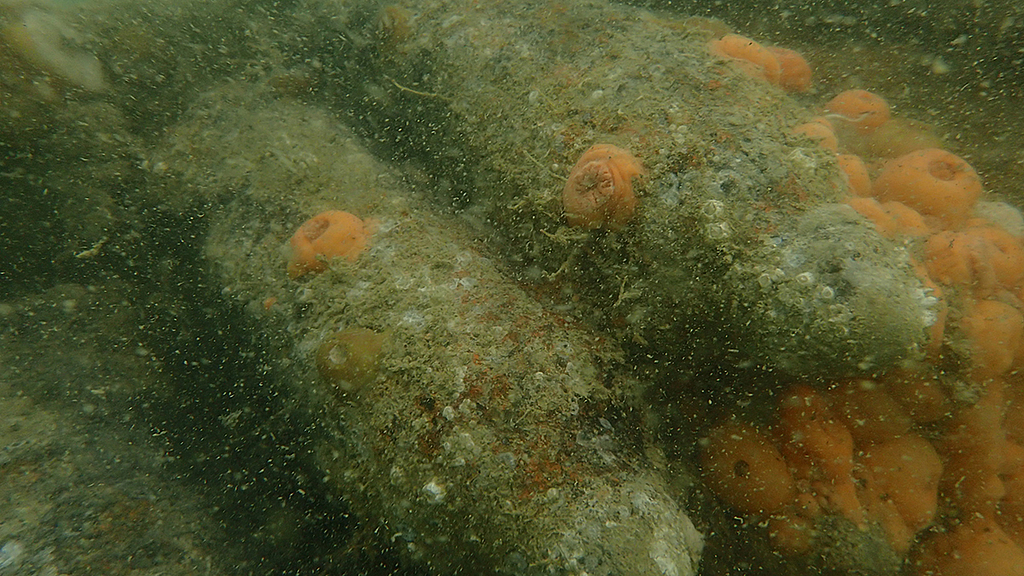Belgian research cruises 2019-2020
The Belgian part of the North Sea has 140 known and identified wrecks that sank during or after WWI and WWII. Around one hundred of these wartime wrecks can still contain ammunitions and other dangerous goods.Within the Interreg North Sea Wrecks project three wrecks were selected as cases studies: HMS BASILISK, a British destroyer that sank in WWII after an aerial attack during “Operation Dynamo”; the German WWII Vorpostenboot V-1302 “JOHN MAHN”, which sank during “Operation Cerberus” (a German naval operation during WWII to break through the British blockade of the English Channel) and the convoy vessel EMPIRE BLESSING, which was a US LIBERTY ship that was carrying about 2.500 tons of ammunitions when it ran into a sea mine and which was turned into a debris field during post-war salvage operations.
During several research cruises in 2019 and 2020 the Flanders Marine Institute explored and mapped these wrecks and conducted sampling (passive samplers, water- and sediment samples, mussels and fish) with its scientific diving team and the research vessel RV Simon Stevin.
All samples were analyzed by the German project partners of the Alfred Wegener Institute – Helmholtz Centre for Polar and Marine Research in Bremerhaven and the Institute of Toxicology and Pharmacology for Natural Scientists at Kiel University to look for chemical compounds like TNT, linked to the ammunitions still onboard, and the possible effects on the organisms living close by or on the wrecks.
Partner
-


